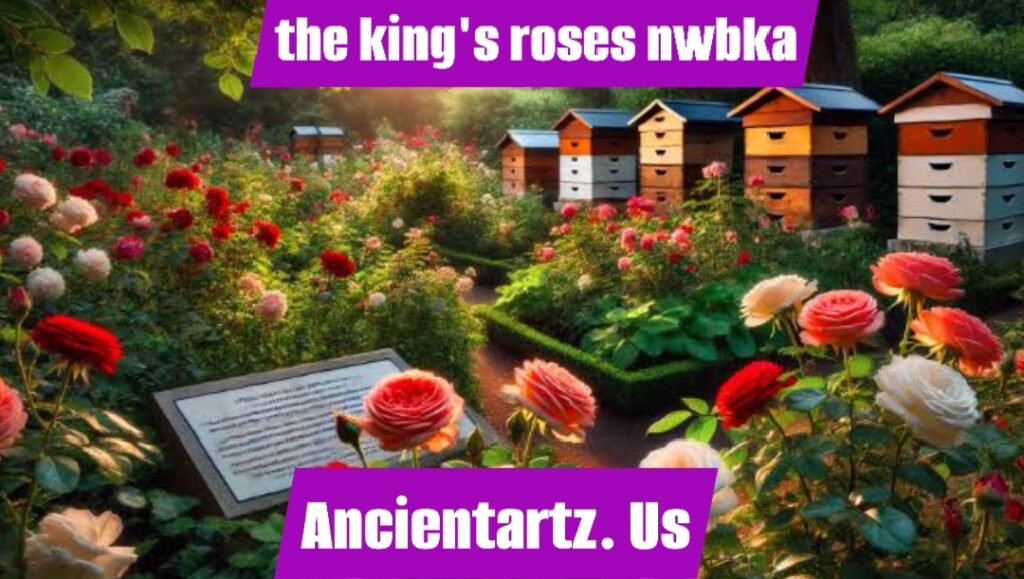Introduction
Throughout history, roses have held an unparalleled position as symbols of love, beauty, and power. Among the myriad tales of this exquisite flower, one stands out in opulence and grandeur: the story of the King’s Roses. The king’s roses nwbka are not just flowers; they embody a legacy steeped in cultural heritage, royal prestige, and botanical splendor. From medieval courts to contemporary gardens, the King’s Roses have woven themselves into the fabric of human history, influencing art, literature, and horticulture.
The concept of royal gardens has always been synonymous with perfection, and within these sanctuaries of beauty, the rose has reigned supreme. The King’s Roses are a specific collection of blooms cultivated for their exceptional qualities, reflecting the grandeur and sophistication of the monarchs who prized them. These roses often symbolize the power and authority of the crown, standing as a living testament to the enduring relationship between royalty and nature.
The New World British King’s Association (NWBKA) has taken the legacy of the King’s Roses into the modern era, preserving their historical significance while introducing contemporary innovations in their cultivation and appreciation. Through a combination of meticulous care, scientific advancements, and artistic expression, the NWBKA continues to champion the timeless allure of these royal blossoms. This article explores the rich history, cultural impact, and ongoing legacy of the King’s Roses, shedding light on why they remain an enduring emblem of regality and beauty.
The Historical Legacy of the King’s Roses
The origins of The king’s roses nwbka can be traced back to ancient civilizations where roses were first revered. In Persia, roses were considered sacred, and their cultivation was a sophisticated art. This reverence for the rose was carried to Europe through trade and conquest, where it became a prized possession in royal courts. By the medieval period, roses were closely associated with monarchy, often appearing in royal emblems and coats of arms.
The Wars of the Roses, a series of dynastic conflicts in England during the 15th century, cemented the rose’s association with royalty. The emblematic use of the white rose for the House of York and the red rose for the House of Lancaster underscored the flower’s symbolic importance. When King Henry VII united the warring factions, he adopted the Tudor Rose—a combination of the red and white roses—as a symbol of peace and unity. This heralded a new chapter in the history of the King’s Roses, embedding them deeply into the narrative of British royalty.
As European monarchs embraced the rose, royal gardens became showcases of botanical excellence. Kings and queens commissioned horticulturists to cultivate rare and exquisite varieties, resulting in a flourishing culture of rose breeding. The King’s Roses became synonymous with luxury and exclusivity, reserved for the most opulent settings and esteemed occasions.
The Symbolism of the King’s Roses
The king’s roses nwbka have always been more than mere flowers; they are powerful symbols of identity and ideology. Each bloom carries layers of meaning, from love and passion to purity and renewal. For monarchs, the King’s Roses have served as a visual representation of their divine right to rule and their commitment to their subjects.
The rose’s duality—its beauty juxtaposed with its thorns—mirrors the complexities of leadership. Monarchs throughout history have used the rose to convey messages of strength and resilience, as well as grace and compassion. In art and literature, the King’s Roses are often depicted as symbols of unattainable perfection, reflecting the aspirational qualities of the crown.
The rose’s universal appeal has also made it a diplomatic tool. Royal gardens featuring the King’s Roses have often been venues for international diplomacy, their beauty creating a neutral ground for dialogue and negotiation. The enduring symbolism of the King’s Roses continues to inspire artists, writers, and visionaries, ensuring their place in cultural narratives across the globe.
The Role of NWBKA in Preserving the Legacy
The New World British King’s Association (NWBKA) plays a pivotal role in preserving and promoting the legacy of The king’s roses nwbka . Founded with a mission to honor the historical significance of these royal blooms, the NWBKA combines tradition with innovation to ensure their continued relevance in contemporary times.
The NWBKA’s efforts include extensive research into historical rose varieties, ensuring the preservation of rare and heirloom specimens. The association collaborates with leading horticulturists and botanists to develop sustainable cultivation practices that maintain the health and vigor of The king’s roses nwbka Their work extends to educating the public about the historical and cultural importance of these flowers, fostering a deeper appreciation for their beauty and symbolism.
One of the NWBKA’s notable initiatives is the establishment of King’s Rose gardens in various locations, showcasing the diversity and splendor of these blooms. These gardens serve as living museums, offering visitors an immersive experience of the royal legacy embodied by the roses. Through workshops, exhibitions, and publications, the NWBKA continues to inspire a new generation of rose enthusiasts.
Modern Cultivation and Innovations
In the modern era, the cultivation of the King’s Roses has reached new heights of sophistication. Advances in horticultural science have enabled the development of hybrid varieties that combine the classic beauty of traditional roses with enhanced traits such as disease resistance, extended blooming periods, and vibrant colors. These innovations ensure that the King’s Roses remain a symbol of excellence and adaptability.
The NWBKA’s approach to cultivation emphasizes sustainability and environmental stewardship. By employing eco-friendly practices, such as organic fertilizers and integrated pest management, the association ensures that The king’s roses nwbka thrive without compromising ecological balance. This commitment to sustainability aligns with contemporary values, making the King’s Roses relevant to modern audiences.
Technology has also transformed the way the King’s Roses are appreciated and shared. Digital platforms allow rose enthusiasts worldwide to connect, exchange knowledge, and showcase their gardens. Virtual tours of King’s Rose gardens and online workshops hosted by the NWBKA have expanded access to these royal blooms, bringing their beauty to a global audience.
The Cultural Impact of the King’s Roses
The influence of The king’s roses nwbka extends far beyond horticulture. They have left an indelible mark on art, literature, and fashion, inspiring countless creative endeavors. From the romantic poetry of the Victorian era to the intricate embroidery of royal garments, the rose’s imagery has been a constant source of inspiration.
In contemporary culture, the King’s Roses continue to captivate audiences. They feature prominently in luxury branding, wedding themes, and high-profile events, symbolizing elegance and refinement. The enduring appeal of these flowers reflects their ability to transcend time and trends, remaining a cherished symbol of beauty and sophistication.
The king’s roses nwbka also hold a unique place in personal narratives, evoking memories of love, celebration, and loss. Their universal resonance ensures that they are not just a royal emblem but a shared cultural treasure, connecting people across different backgrounds and generations.
Conclusion
The king’s roses nwbka stand as a testament to the enduring power of beauty and symbolism. Rooted in a rich history and nurtured through centuries of dedication, they continue to inspire awe and admiration. The NWBKA’s efforts to preserve and promote the legacy of these royal blooms ensure that their significance remains undiminished in a rapidly changing world.
As we look to the future,the King’s Roses remind us of the timeless values of grace, resilience, and harmony. Their story is not just one of royalty but of humanity’s enduring connection to nature and the pursuit of excellence. Whether adorning royal gardens or blooming in private homes, the King’s Roses embody a legacy that transcends borders and generations.
FAQs
What makes the King’s Roses unique?
The King’s Roses are distinguished by their exceptional beauty, historical significance, and association with royalty. They are often cultivated for their unique traits, including vibrant colors, intricate forms, and rich fragrances.
How does the NWBKA preserve the King’s Roses?
The NWBKA preserves the King’s Roses through research, sustainable cultivation practices, and public education. Their initiatives include the establishment of rose gardens, development of hybrid varieties, and promotion of the roses’ historical and cultural significance.
Can I grow King’s Roses in my garden?
Yes, many varieties of the King’s Roses are available for cultivation by enthusiasts. The NWBKA provides resources and guidance on how to grow these royal blooms successfully, emphasizing proper care and sustainable practices.
What is the symbolic meaning of the King’s Roses?
The King’s Roses symbolize love, beauty, power, and resilience. They have historically been used to represent royal authority and unity, as well as personal emotions such as passion and remembrance.
Are the King’s Roses relevant today?
Absolutely. The King’s Roses continue to captivate modern audiences with their timeless beauty and cultural significance. Innovations in cultivation and global appreciation ensure their enduring relevance in contemporary society.
Also Read This: The King’s Roses: A Timeless Symbol of Beauty and Legacy


